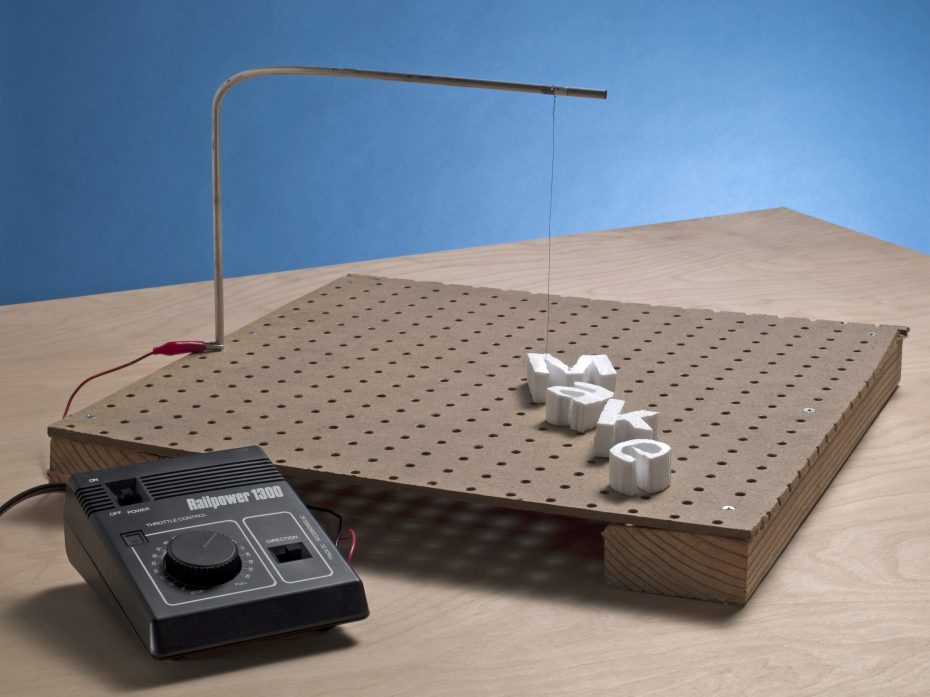What keeps your coffee warm but also rides the cold Pacific surf? What’s in the Rock and Roll Hall of Fame but makes an annoying, squeaky sound? Even though it’s banned in over 100 cities, you can find it just about everywhere. What is it? It’s expanded polystyrene (EPS) foam.
Styrofoam is a great insulator (for hot drink cups and wall insulation), lightweight and stiff, and impervious to water (great for surfboards). Unfortunately, it’s also impractical to recycle and can be an unsightly part of the waste stream. Our landfills and waterways are filling up with discarded coffee cups, store meat trays, and take-out packaging.
With this easy hot-wire foam cutter, you can reuse this leftover EPS foam to create treasures from trash!
Once you’ve mastered the basic foam cutting techniques, you can create a double-cut, 3D teddy bear shape, spin a compound-curve cone, and cut a stack of foam sheets to make a blizzard of snowflakes.



